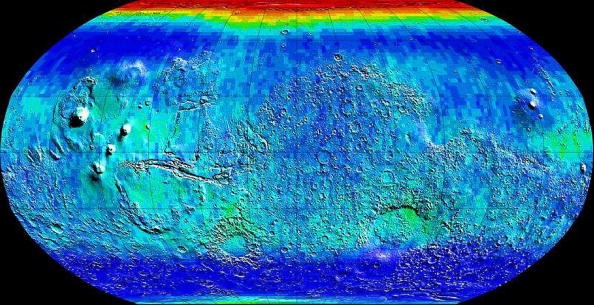The first Mars ancient water map was developed. The European Space Agency created this new tech using data from the Mars Express Observatory.

ESA also relied on the information provided by the NASA Mars Reconnaissance Orbiter to develop the new digital map.
Because of its advanced capabilities to identify ancient bodies of water on the Red Planet, experts believe it can benefit future NASA Mars missions.
The ESA experts behind the new Mars water map expect their innovation to change how NASA astronauts and other space researchers see the Red Planet's past water bodies.
First Mars Ancient Water Map Has Been Developed!
According to The Daily Mail UK's latest report, the new Mars ancient water digital map can help NASA identify the best landing spots on the Red Planet.

Read also: Multicolored Mars: Researchers Use Machine Learning To Map Source of Ancient Martian Meteorites
The European Space Agency explained that their new map could locate the areas where aqueous minerals are abundant.
"These are from rocks that have been chemically altered by the action of water in the past, and have typically been transformed into clays and salts," said ESA via its official press release.
European space experts also stated that the new map could change the current belief that Mars' water is limited.
They added that the aqueous minerals on the Red Planet might actually play a huge role in shaping the land masses of the heavenly body.
How ESA's Mars Water Map Can Help NASA
The European Space Agency claimed that their new digital map could identify future landing sites for NASA and other space agencies planning to establish a long-term presence on the Red Planet.
Since this new space tech can identify the aqueous minerals on Mars, there's a high chance that the presented landing locations will have lots of salts and clays, which are both essential building materials.
On the other hand, places abundant in water can also be used for important space studies. If you want to see further details about ESA's new Mars water map, you can visit this link.
Previously, experts discovered a new method to produce oxygen and fuel for future Mars explorations.
Meanwhile, Mars drones called skycopters may soon explore the Red Planet.
For more news updates about Mars and other technologies that can help future explorations on this planet, always keep your tabs open here at TechTimes.
Related Article : Artist Creates 53-sqm Inflatable House Prototype Called the 'Building A Martian House' Project
This article is owned by TechTimes
Written by: Griffin Davis
ⓒ 2025 TECHTIMES.com All rights reserved. Do not reproduce without permission.




